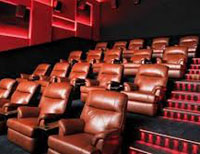 Leisure has become a favourite of retail property people and, increasingly, investors. M&G’s recent report advocating investment in the sector is just one of a number in the past few years.
Leisure has become a favourite of retail property people and, increasingly, investors. M&G’s recent report advocating investment in the sector is just one of a number in the past few years.
Leisure is a major part of the UK economy, employing 10% of the workforce and generating £170bn of revenues in 2014. It has been incredibly resilient in the past three recessions, outperforming because of its longer leases and lower void rate.
The sector is benefiting from improving incomes and consumer confidence, but its performance is also driven by long-term trends, such the desire for buying experiences rather than just owning things, rising eating-out rates and over-55s who are increasing their leisure consumption. And, of course, most leisure is still dependent on one channel – real estate – to service its customers.
So why is leisure still treated like a small, alternative property sector? First, it is fragmented. Unlike retail or offices, leisure comprises lots of sub-sectors, such as cinemas, bars, restaurants, health and fitness, hotels, bowling, pubs, kids’ play, casinos, bingo and trampoline parks, to name just a few. Each has its own distinct tenants, performance metrics and operational models, which makes it hard for the sector to get its message across.
Also, compared with the other sectors, leisure property research has been scarce. Simple questions, such as what is the market value of the sector, have been surprisingly hard to answer. Currently, only a small proportion is held by institutional investors, where it comprises 2% of the total IPD portfolio. The good news is that more research is emerging and institutional investors are looking to invest more in the sector.
Also, as leisure is increasingly embraced by retail landlords (partly to provide a better experience and also to help fill their voids), it finds itself treated as a retail sub-sector, making it hard to forge its own identity.
However, retail investors are engaging only with certain parts of the sector. Cinemas and restaurants (which go from strength to strength) make up the vast majority of deals done by retail landlords.
But what about the other leisure sectors? The majority of these are large space users occupying over 20,000 sq ft, which need high ceilings and minimal columns. They typically pay rental levels above industrial but below retail warehousing. Many require expensive fit-outs. This makes letting to them impractical or unprofitable for many retail owners.
Easy-to-use car-parking and good road access are also important to many, making town-centre retail harder to operate from.
Many of these operators are enjoying a period of growth. Bowling has recovered well from the recession, with existing and new operators, such as Hollywood Bowl, MFA and QLP, looking to expand. Budget hotels are also growing aggressively.
ids’ play is starting to get its act together, with experienced operators such as 360 Play, Gambado and Kidspace seeking to grow. Budget gyms are continuing their phenomenal expansion, although consolidation must occur at some point.
And new sectors are emerging. A good example is trampoline parks. A number of brands have started up and secured funding, such as Gravity, Airhop, Oxygen, Energi and Bounce. Most have opened only one or two units. Many have had to open in former industrial units that do not provide the nearby restaurants or quality car parking they need in the long term.
Trampoline parks can generate excellent footfall, but tenants need to be operationally excellent in this field and staff training is critical.
Well-located leisure parks and stand-alone units in out-of-town locations still provide the best sites for these larger operators.
The leisure economy is growing strongly. Its real estate provides strong income yields and long leases that are increasingly rare in property. However, given the complexity, make sure that you have the right specialist experience and skills on board.
Ashley Blake is chief executive of Otium Real Estate











